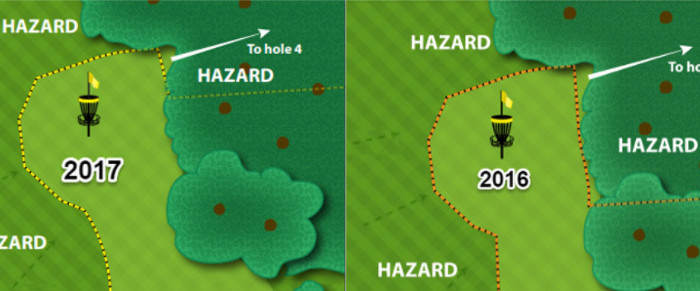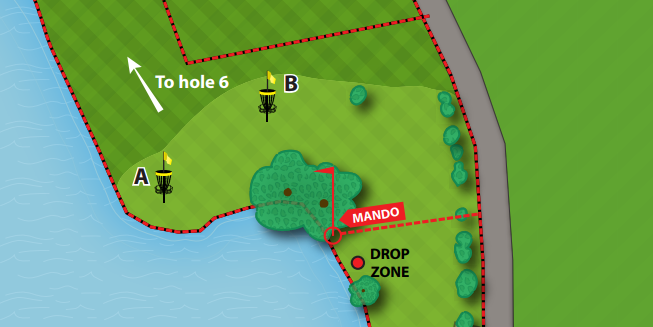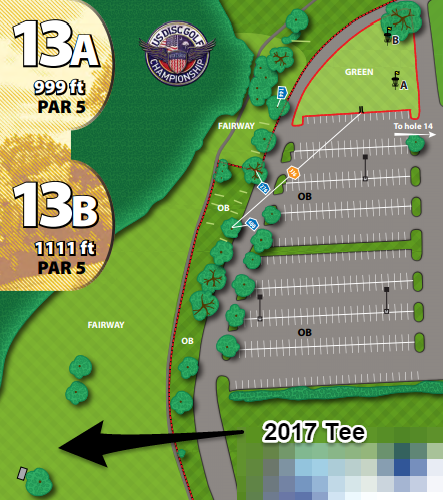With only a few major hole modifications and similar ground rules, the USDGC looks to be, in many ways, picking up where it left off last year before Hurricane Matthew put an early end to the event.
Though there aren’t dozens of changes, the alterations made are significant and will definitely impact this year’s event. Here’s a quick run-down of the noticeable changes. Keep in mind this is not a complete listing of changes or rules. For a hole-by-hole analysis of the ground rules look to the 2017 Caddy Book Draft.
Like in years past, you’ll find both hazard (yellow rope) where players can choose to play from that lie with a one throw penalty or choose their previous lie with a similar penalty. And, there’s also standard OB (red rope). Each hole is unique, so look for hole specific OB rules in the Caddy Book.
The Run-Down
- Hole 1: Stumped? There’s only one pin position this year, and it’s placed to the left edge of the green inside the large tree stump. Also, there’s a mando right for the first tree on the left.
- Hole 3: Woods get a little safer. The hazard doesn’t wrap around the right side of the green as much this year, so pars and better are still possible after an errant shot in the cabbage.

- Hole 5: Longest hole on the course gets longer. You might not be able to see the Pin B placement from the tee, but rest assured –it’s there, 1,118 feet away (pushed back 40-feet from last year). With the lake’s corner mando pole still in place, that could make for some interesting approaches across the water.

- Hole 9: Finds its teeth again.
Last year Winthrop designers were looking for more aggressive play with a straight-away Hole 9 layout tailored for big shots and low scores. Modest, safe shots were what they saw instead, so this year’s design “put some teeth back in the hole, while still providing the opportunity for eagle,” according to Andrew Duvall, who took the lead in hole design this year.

Hole 13: How about 999 and 1111?
Every now and then, you just find something you like better. That’s what the designers found this year with Hole 13. Duvall says the new look encourages bigger air shots off the tee, which then leads to a challenging route to the island green. The eagle opportunity is still there, but players will have to earn it. The hole also returns to a Par 5.
For 2017, the tee pad is pushed back 75 feet. That whole left side, which was hazard last year, the vast majority of that is now in play. To the right of the sidewalk, for most of the hole, is OB. At about 276 feet to Pin A (388 for Pin B), the OB line stops following the sidewalk and takes a right turn toward the road, creating a thin landing zone for second shots. The island green is in place as usual. Pin A is the same as last year (999 feet from the tee), Pin B, is a hearty 1,111 feet (Pin B moves back 308 feet.).
**Hole 13 Specific Rule: All OB bordering the fairway is standard OB. Players continue to play standard OB until the disc comes to rest in the island green. Course designers believe this format will encourage spectacular play while making the volunteer spotters’ task manageable. For more details refer to the Caddy Book.

Hole 16: Tight lines. The hazard line shifts to include more of the fairway. There’s only one pin, and it’s close to the final large tree, but not as close as last year.







